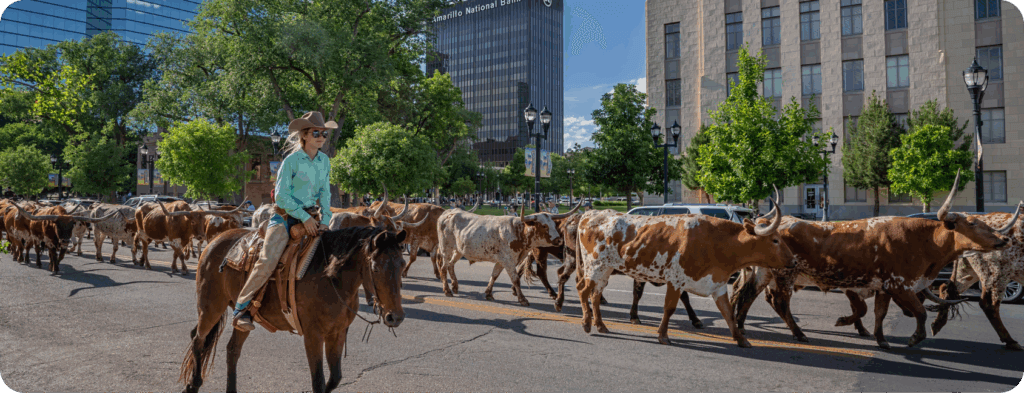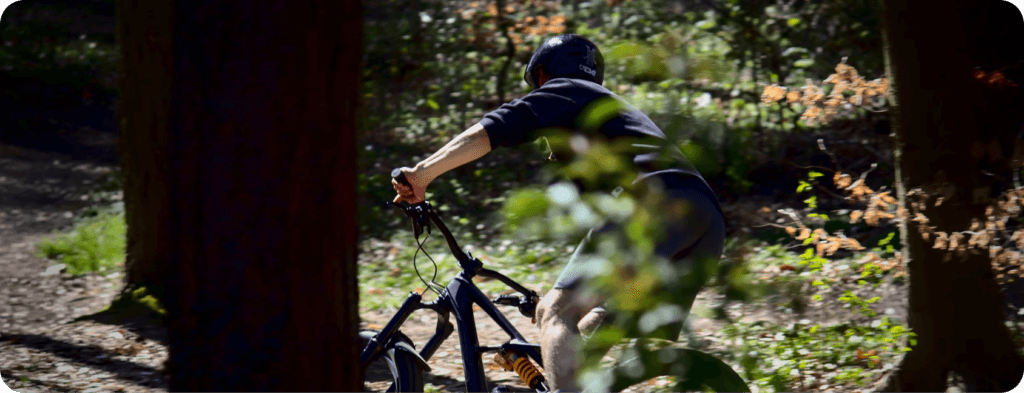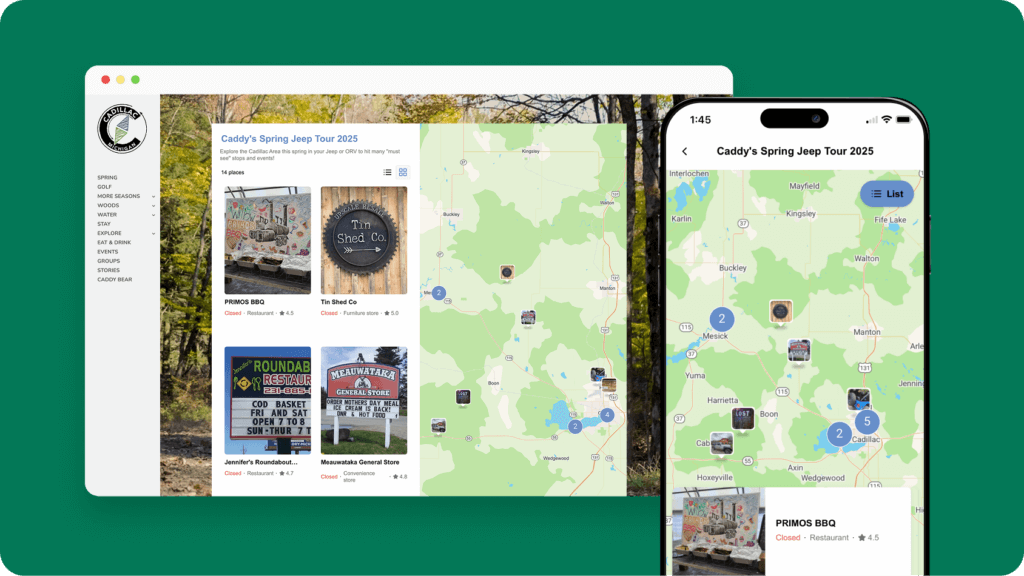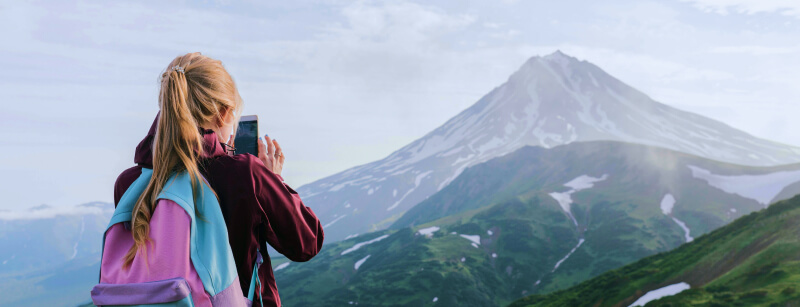
What’s ahead
It’s official. We are obsessed with watching travel videos before a trip.
Millions of us scour TikTok, Instagram, and YouTube to find local activities or a hole-in-the-wall restaurant (without any other tourists) to eat in. And the US travel industry spent $6.7 billion on digital platforms last year to advertise destinations and win us over.
But who are the biggest winners of our thirsty travel research? 🤔
Right now, content creators who produce authentic travel videos are coming out on top.
According to Meta’s internal analysis of two million Reels, having a human presence in a video (like a person or just your face) can boost click-through rates by 25%. User-generated content is 5x more likely to convert someone watching it. And 84% of people who follow a travel influencer look to them for recommendations for trips or inspiration.
For travel creators or DMOs who want in on the action, this article explains how to make a travel video that connects with your audience and what equipment you need to get started.
Why Make A Travel Video?
The average American traveler budgets over $4500 for leisure travel a year.
It makes sense for any DMO to try and get a slice of that pie. And one of the best ways to do it is through high-quality videos—especially short-form.
CrowdRiff’s 2024 Trends Report found destination marketers plan to prioritize short-form video like Instagram Reels, TikTok, and YouTube Shorts this year as a key marketing tactic. A staggering 98% of DMOs—across every budget bracket—said they plan to distribute their creator content through Instagram ads.
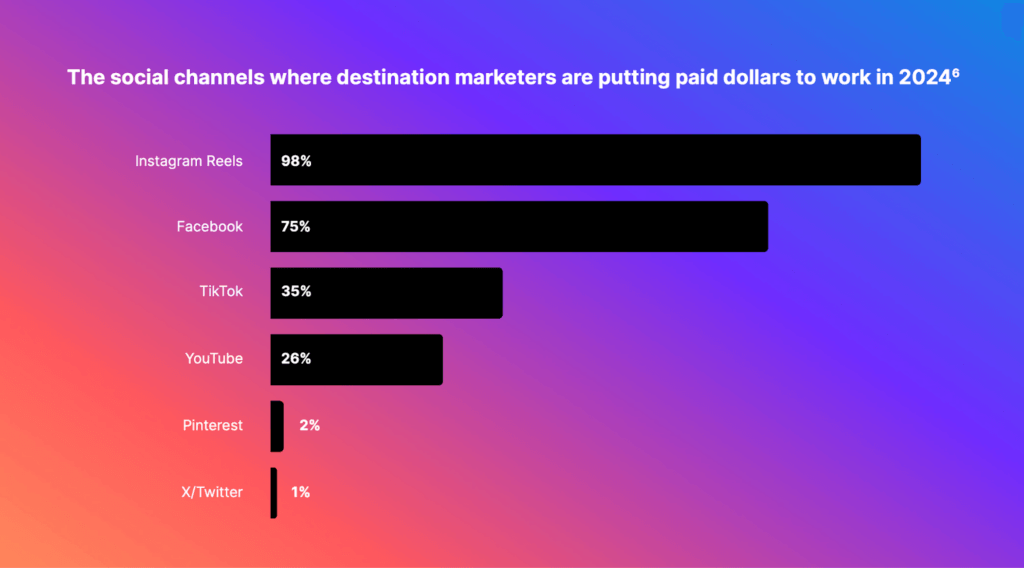
The most interesting finding of our report was the impact social media content has on people planning a vacation:
- Gen Z searches on TikTok over Google, and 77% of travelers now use socials in the early stages of trip planning
- 81% of the destination marketers we surveyed have seen an increase in engagement on social media when they used User-Generated Content (UGC)
- 90% of DMOs believe influencers marketing will continue to have a big impact on audiences in 2024
All signs point to one conclusion… travelers are turning to social media videos to find inspiration for their next vacation. Let’s look at what it takes to make a video that influences your target audience to book a trip👇
How To: 4 Steps To Making An Effective Travel Video
Step 1. Plan Out Your Video Idea
The work of a successful travel video happens well before you hit record.
A travel video should be researched and outlined so the final product matches your content goals. We’re big fans of planning out a video using shot lists and storyboards—it’s easier to visualize what the end product will look like.
Let’s say a DMO in Los Angeles wants to make a video to market the city’s vibrant street food truck scene, which stretches from Burbank to Hollywood, Downtown, and even Long Beach.
That’s a lot of ground to cover, so searching Instagram and Pinterest to find trending locations and local vendors in each area is a good place to start. Next, the DMO should bookmark three to five shooting locations depending on video length and what story they want to tell. For example, a video promoting culinary diversity in the food truck scene could have an in-depth look at the vendors and why they love cooking, along with b-roll shots of their signature dishes.
Once a video theme and locations are nailed down, the last step is making a shot list. It should have details like:
- Location. Specific areas and places that will feature in the video. In the food truck example, this could be streets where well-known vendors operate or famous celebrities have eaten
- Shot type. Close up? Full shot? Time-lapse? Drone footage? Figure out roughly what type of camera shots and angles will help you capture a story that fits the brief
- Scene description. Plan how you will frame each shot/subject to tell an authentic story
- Audio. Want to interview someone? Make sure they’re mic’d up so the audio is clear and easier to edit later. Also, plan to capture ambient noise like crowds and streets to inject local atmosphere into your video
This looks like a ton of work to do before video production starts. But the more detailed and thought out the planning process, the easier it will be to shoot and edit your film.
⚡Pro-tip: Need help getting the right shots for a short-form video? The best way to inject authenticity into a video is through UGC. Thanks to CrowdRiff Creators, DMOs and travel marketers can now partner with content creators to deliver unique UGC and tell a real story. Learn more about CrowdRiff Creators here 🤳
Step 2. Choose the Type of Video to Film
Don’t wait until edits have wrapped up to decide what platform to distribute your video on.
Vertical travel video for platforms like TikTok, Reels and YouTube Shorts should be filmed in a 9:16 vertical format, while YouTube videos need horizontal footage shot in 1080p or 4K for best results. Think about who will be watching your video when making this decision:
- 77% of 15-35-year-olds watch YouTube, with YouTube Shorts continuing to skyrocket in popularity
- Influencers on TikTok and YouTube generate the largest share (over 90%) of video views
- 75% of people watch short-form video content on their mobile, not a desktop or laptop
- Instagram is still the preferred social platform for users aged 16-34
So… Should you target travelers on Instagram? Or those watching videos on their phones? Or shoot for the users on YouTube? 🤔
The numbers prove there isn’t a one-size-fits-all answer to this question—it comes down to your audience. Look at data from past campaigns to see what content potential travelers respond best to, and start experimenting.
Stay ahead of the curve with our 2024 Trends Report
Unlock the trendsStep 3. Make it Short(ish) and Sweet
If you are shooting a short-form travel video, hook your viewer in the first five to ten seconds of the video.
Fuelled by the popularity of TikTok and Reels, consumers are snapping up short-form video content, but only if you capture viewers’ attention quickly. According to HubSpot research, videos lasting under three minutes are the best bet for marketers, with slightly longer six-minute videos also doing well with audiences:

And it’s not just young travelers who are turning to short-form travel videos for inspo. A survey from MMGY Global found 40% of US travelers over 30 used TikTok rather than Google to research a trip. But to capitalize on these short-form numbers, you must hook your audience immediately after they click on your video 🎣
Destination Cleveland has mastered the art of storytelling by focusing on the first five to fifteen seconds of every video. Check out this Instagram post to celebrate local hip-hop artists for the industry’s 50th anniversary:
The video introduces the topic and famous faces in the first couple of seconds to engage viewers. It then follows up with local history, smooth transitions, and local scenery to tell a deeper story. It’s also tagged with #ThisisCLE to support the DMOs overall video marketing strategy on Instagram.
There’s no hard-and-fast rule about the ideal duration of short-form video—just keep it flowing and on message.
Step 4. Make it Unique—But Keep it Relatable
With 95% of American travelers yearning to spend (at least part of) their trip on a new and unique experience, focus on how to make your travel video stand out.
Look at travel videos on your destination that are already out there and try to spot any unique elements that are missing. For example, a video of New York City may focus on Times Square and the Statue of Liberty, but miss out on important ingredients like culture or community—adding these elements will give the video an edge.
The Singapore Tourism Board used this technique when marketing the Grand Prix in 2022. The DMO teamed up with Australian vloggers Swag on the Beat to show off their travel experiences at the event. Part of the campaign featured local grandmothers chatting about why they love Singapore.
@visit_singapore Conquering the King of Fruits #VisitSingapore #GranPrixSG ♬ original sound – Visit Singapore
As Singapore Tourism Board’s area director Stephanie Yong explained, the campaign aimed to find a fun and innovative way to show off Singapore’s hidden gems.
“We also wanted to break the mold of tourism campaigns being fronted regularly by well-known personalities or celebrity influencers. By using local Singaporean grandmothers, we hope to touch the hearts of Australians in a fun and refreshing way.
More importantly, all these lovely grandmothers have such a wealth of authentic experiences and stories that it would be a shame if we don’t share them with our Aussie fans.”
This is the type of relatable content we didn’t know we needed… but definitely can’t live without 😍
To film travel vlogs like these that connect with your audience—start with the right toolkit 👇
Tools & Tech: Everything You Need To Make A Great Travel Video
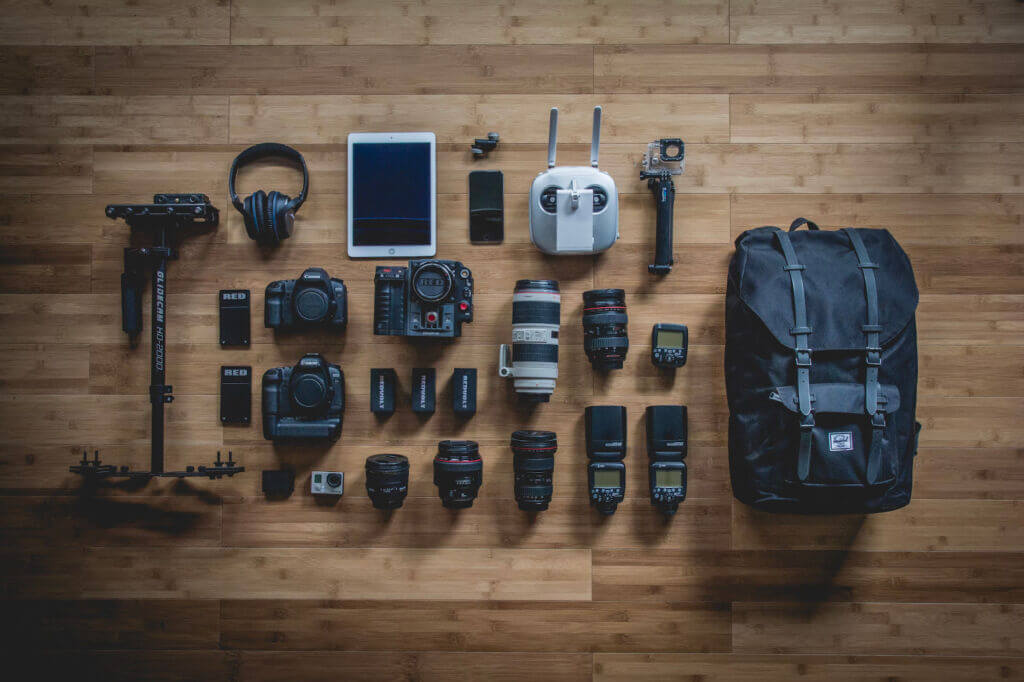
Photo by Jeff Hopper on Unsplash
Tool 1: Camera 📷
Most travel videos are shot on a phone or a DSLR camera.
There are lots of other camera gadgets you could buy (and quickly eat up your quarterly budget in the process). But the reality is, 69% of US consumers prefer videos to be authentic and relatable rather than polished cinematic masterpieces.
If all you have for video making right now is your iPhone… that’s a-ok 👌
What your videography should focus on is how the film is shot. If possible, adjust your settings so everything is in 4K (or 1080p on your phone) and 24 Frames Per Second (FPS) for cinematic quality. If you want to record in slo-mo, shoot video at 60 FPS (or 120/240 for super slo-mo) so files can be edited correctly.
If you have room in your backpack, some accessories can help film better-quality footage:
- A tripod/phone mount/gimbal stabilizer (depending on what device you film on) to help with panning and camera movement
- An external microphone to capture ambient sound and voiceovers
- A GoPro (or similar type of camera) to capture action shots on the move
- Spare lenses for different focal shots (check out this super helpful Sony guide to help you choose the right ones)
- A storage device (like a hard drive) and SD cards to store footage
Photo by Dimitro Frantz on Unsplash
Want our advice on what setup to go with?
Don’t break the bank. Getting started is more important than spending thousands on a new kit. Film travel videos with what you have and figure out what your audience likes first.
Tool 2. Lighting + Music 🎶
As legendary director Martin Scorsese once said—light is at the core of who we are and how we understand ourselves. The magic in a travel video isn’t just in the footage. It’s in the ambience created by its lighting, music, and sound effects.
There is no “right” lighting to shoot a travel film. Some of the best (and most authentic travel stories) are shot when creators walk through a busy street or slurp up ramen in a dimly lit restaurant. However, a lot of creators choose to shoot footage and B-roll during the “golden hour”; shortly after sunrise or before sunset. This window of time offers low and diffused light to create a warm, soft mood for shots.
For music, be careful not to break any copyright laws by uploading music without the appropriate license (learn about Fair Use here). Use royalty-free music platforms to source suitable tunes, like:
- Free Music Archive. The clue is in the name—the library is totally free and has a ton of royalty-free tracks to use on YouTube and social videos.
- YouTube Library. This is only for YouTube videos, but the platform has a good selection of music and sound effects to download for free.
- MusicBed. It’s a paid platform, but MusicBed is worth it if you want a video to have a more polished sound. It has filters to search for music by artist, mood, instruments and even attributes like language/culture to get a vibe to match a specific shot.
For short-form videos, platforms like TikTok and Instagram have a ton of music options without using a third-party tool.
For example, TikTok created a Commercial Music Library inside its Creative Center, which is full of royalty-free audio with over 150,000 pre-cleared tracks. Just search for songs by genre, hashtag, mood or song title to find a track that fits your video. There are even playlists from other creators you can browse for inspo and add directly to your short-form video.
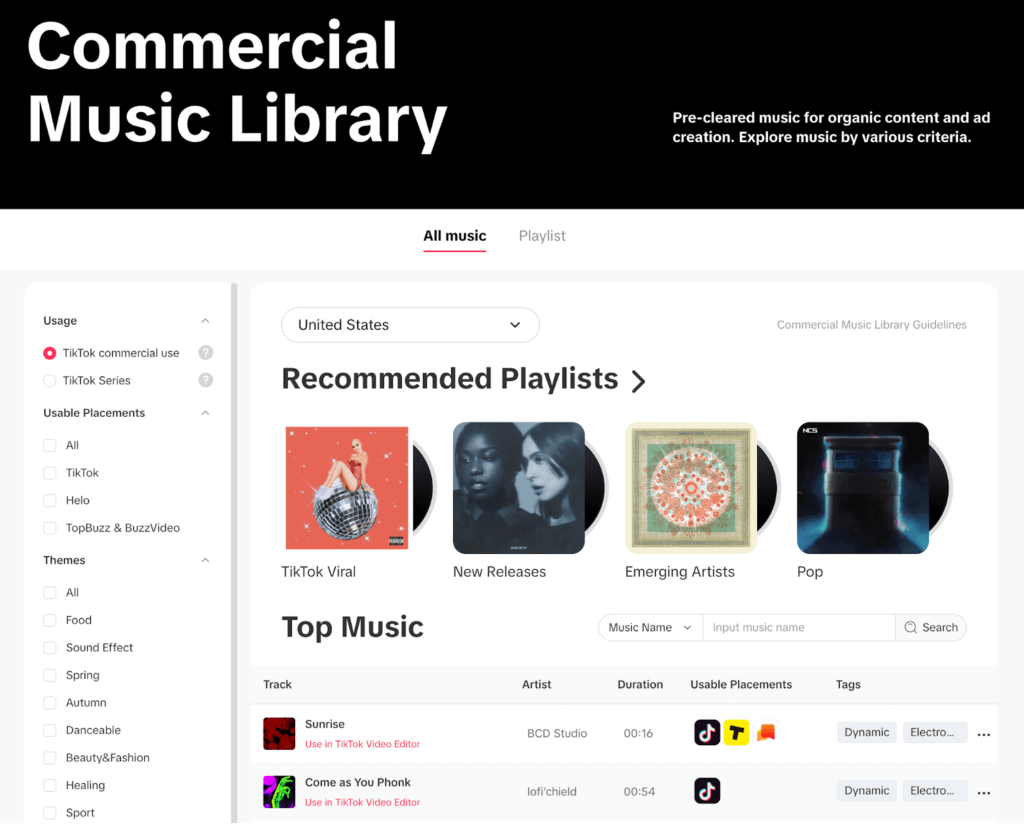
TikTok’s Commercial Music Library is like royalty-free Spotify for creators
Don’t forget about sound effects. Sites like Epidemic Sound and Artlist have cheap sound effect libraries to add in noises like crowds and traffic to create ambience and depth in your videos.
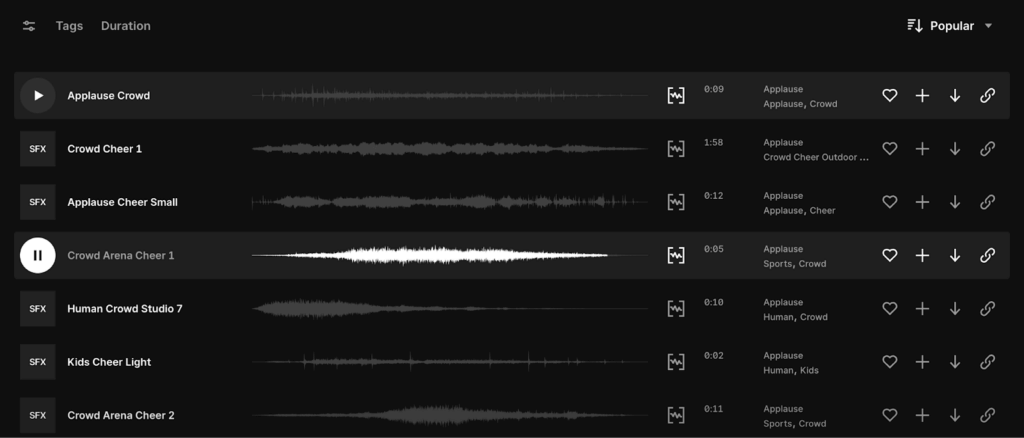
Sound effects in Epidemic Sound
The last tool you need is to help you tie everything together and bring your video to life—an editing suite.
Tool 3. Video Editing Software ✂️
Plan on doing your travel video editing on an Apple computer?
It will have iMovie (which is totally free) and suitable for basic videos. For anything beyond that, most creators cut videos on Adobe Premiere Pro or DaVinci Resolve for professional results:
🎥 Adobe Premiere Pro. Edit video using “stacked” timelines to trim footage, isolate sound, and add layers. Premiere Pro also has a ton of extra features like color correction, effects, titles, and transitions to help create a slick video. One feature we love is the collaboration tools—DMOs and travel content creators can share a video and collect feedback from stakeholders before exporting the final product.
🎥 DaVinci Resolve. Known for cinematic-quality videos, DaVinci Resolve allows creators to tackle their entire editing process under one roof. Unlike Adobe, DaVinci Resolve has color correction, visual effects, and audio post-production as well as motion graphics tools in a single tool. DMOs get a lot of bang for their buck with this editing software, but it’s probably overkill for video editors creating TikToks or short YouTube videos.

Premiere Pro is more complex to use, but long-form filmmakers can get a polished video. Image source
These tools are perfect for longer (and more complex) travel videos that might find a home on your YouTube channel. For short-form videos for platforms like TikTok and Reels, there are some other platforms without the learning curve 👇
Best Video Creation Software for Travel Videos
You don’t have to blow your marketing budget to make polished short-form videos.
There are tons of tools available to DMOs and agencies to make viral-worthy videos without breakin’ the bank. When we recently polled creators to see which tools they loved, there were a couple of clear winners:
- CapCut. This tool was the highest rated tool in our social media poll, and it’s one for the Instagrammers. Its full online editing suite allows creators to edit video clips using templates, add transitions and presets, and auto-caption text. The basic version is free, and to access Pro it’s just $7.99/month.
- Filmora. For creators who want to keep edits simple, Filmora is the tool for you. It features built-in templates, stock media, and transitions. It also has a ton of AI-based features like thumbnail creation and editing advice to help you publish those masterpieces. The starter plan costs around $120/year.
- Instagram Reels Templates. A built-in Instagram feature, these templates allow you to trim, edit, and create a Reel from your phone. Just pick a template you like, add audio, and drop existing video into the editor. The cool thing about this tool is if a specific template has worked well in the past, you can recycle it and just add in new footage!
These tools are free and pack in most of the features you need to make a share-worthy video for your destination.
If you want an easy, all-rounder tool to publish content on any social platform, check out CrowdRiff Studio. Creators can collect, organize and storyboard media inside the platform. Then, using Studio’s editing tools, you can add text, overlay images and fine-tune the sound.
You can even publish videos straight to your socials and website without leaving the platform. How easy is that?! 🤯
Want to learn more about editing short-form video? Download our complete eBook!
EBOOK
Short-Form Video Editing Tips for Destination Marketers
Connect With Your Audience With Authentic Travel Videos
Visitors want to make their next adventure unforgettable.
Travel videos are one of the best ways to show off the authenticity of a destination and attract these travelers to your destination. It’s also the best way to inject your unique personality into content. Yes, words matter… but watching a local grandmother show you around their favorite food market in Singapore hits you right in the feels.
But short-form videos take a ton of time to make—and DMOs might not have the resources to do it. That’s why we launched CrowdRiff Creators.
We connect you with real storytellers who can capture your destination from its best angle. We do all the groundwork behind the scenes and take care contracting, licensing, and payments. The creator’s (fully licensed) videos are then added to your content library. All you have to do is add your own stamp and share your new, authentic content with your audience.
We made it simple to create content at scale so you can focus on what you do best—giving travelers an unforgettable vacation! ✈️
Book a walkthrough today
Find out how CrowdRiff Creators can help you source authentic content at scale
Get in touch

